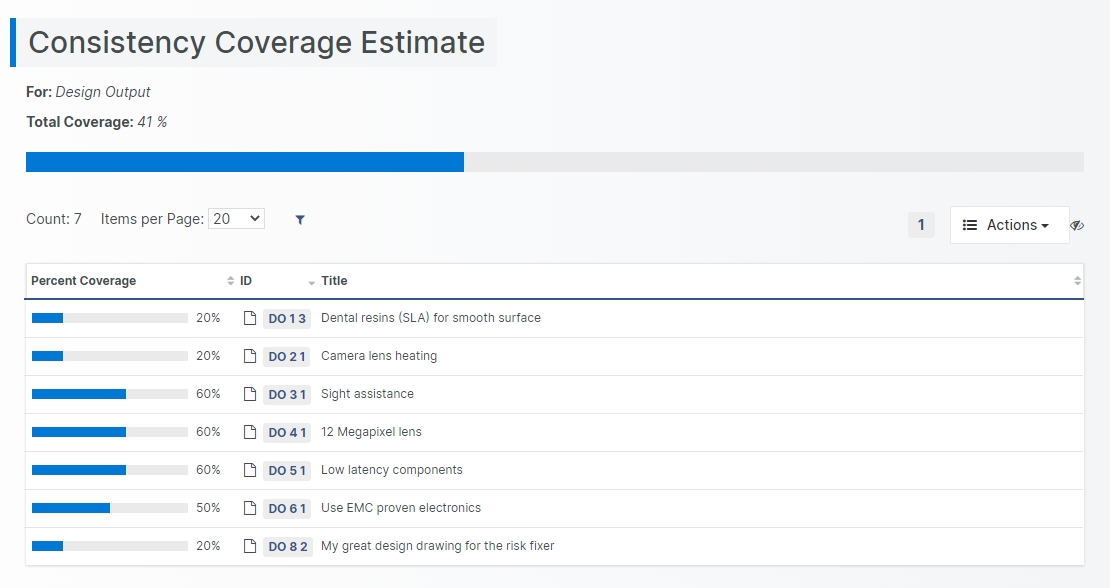Display Consistency Coverage
In conjunction with the inconsistency concept, Aligned Elements also support the option of displaying the Consistency Coverage of a selected Document Object set. The Consistency Coverage indicates to which degree a Document Object is consistent in terms of percent by displaying a progress bar. If a Document Object does not have any inconsistencies, then its Consistency Coverage is 100%.
The Coverage idea is based on granting “points” for not having inconsistencies. Depending on the current state of the Document Object, it is awarded “potential” inconsistency points and “actual” consistency points. Subtracting the “actual” coverage points from the “potential” inconsistency points causes a “deficit.”
The coverage is then calculated as actual points divided by potential points.
The potential inconsistency points are calculated by inspecting the Validation Rules for the type and comparing it with its current state. Some of the Validation rules are concerned with the Document Object's internal state, others are concerned with the state of the Document Object's traces.
How to display the Consistency Coverage
To display the Consistency Coverage of all objects of a given Document Object type (or all objects of all types), select the corresponding Type Name in the Consistency Coverage-drop down under Project Status in the Navigation Bar.
After selecting the applicable type, the Consistency Coverage Estimate view displays the Document Objects with their corresponding coverage.

A summary bar at the top displays the average Consistency Coverage for all selected Document Objects combined.
Use the Action button to:
Generate Multiple...
Display Inconsistencies
Display Chart
Set Snapshot
Generate a Word Report
Generate a Template-based Word Report
Generate Excel Report
Export the Document Objects
